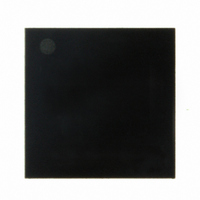TRC103 RFM, TRC103 Datasheet - Page 24

TRC103
Manufacturer Part Number
TRC103
Description
RFIC TRANSCEIVER MULTI-CHANNEL F
Manufacturer
RFM
Series
TRCr
Datasheet
1.TRC103.pdf
(64 pages)
Specifications of TRC103
Frequency
863MHz ~ 960MHz
Data Rate - Maximum
100kbps
Modulation Or Protocol
FSK, OOK
Applications
General Purpose
Power - Output
11dBm
Sensitivity
-112dBm
Voltage - Supply
2.1 V ~ 3.6 V
Current - Receiving
4mA
Current - Transmitting
30mA
Data Interface
PCB, Surface Mount
Antenna Connector
PCB, Surface Mount
Operating Temperature
-40°C ~ 85°C
Package / Case
32-QFN
Lead Free Status / RoHS Status
Lead free / RoHS Compliant
Memory Size
-
Other names
583-1095-2
Figure 16
3.9.7 Manchester Encoding
Manchester encoding is enabled by setting the PKTCFG1C_Man_En[7] bit to 1, and can only be used in Packet
data mode. Figure 17 illustrates Manchester encoding. NRZ data is converted to Manchester by encoding 1 bits
as 10 chip sequences, and 0 bits as 01 chip sequences. Manchester encoding guarantees DC-balance and fre-
quent data transitions in the encoded data. Note the maximum Manchester chip rate corresponds to the maximum
bit rate given in the specifications in Table 48.
Figure17
In transmit, Manchester encoding is applied only to the payload and CRC parts of the packet. The receiver de-
codes the payload and CRC before performing other packet processing tasks.
3.9.8 DC-Balanced Scrambling
A payload may contain long sequences of 1 or 0 bits. These sequences would introduce DC biases in the trans-
mitted signal, causing a non-uniform power distribution spectrum. These sequences would also degrade the per-
formance of the demodulation and data and clock recovery functions in the receiver. System performance can be
enhanced if the payload bits are randomized to reduce DC biases and increase the number of bit transitions.
As discussed above, DC-balanced data can be obtained by using Manchester encoding, which ensures that there
are no more than two consecutive 1’s or 0’s in the transmitted data. However, this reduces the effective bit-rate of
the system because it doubles the amount of data to be transmitted.
Another technique called scrambling (whitening) is widely used for randomizing data before radio transmission.
The data is scrambled using a random sequence on the transmit side and then descrambled on the receive side
using the same sequence.
www.RFM.com
E-mail:
info@rfm.com
Technical support +1.800.704.6079
Page 24 of 64
©2009-2010 by RF Monolithics, Inc.
TRC103 - 12/15/10

















